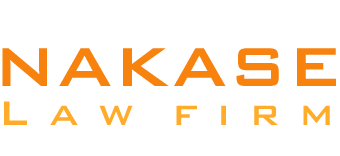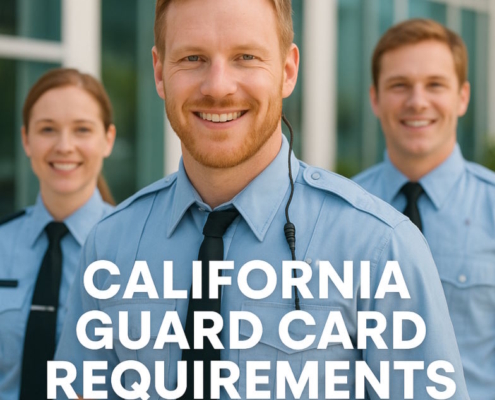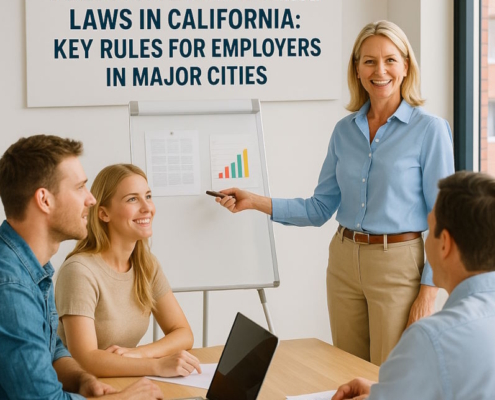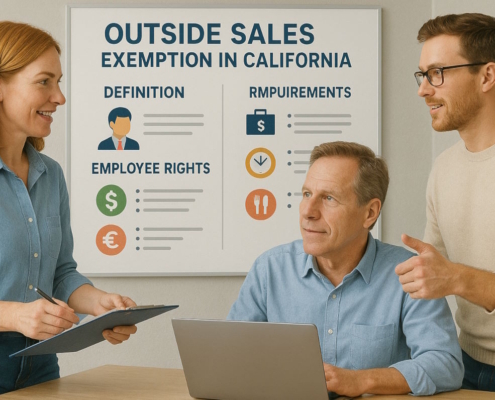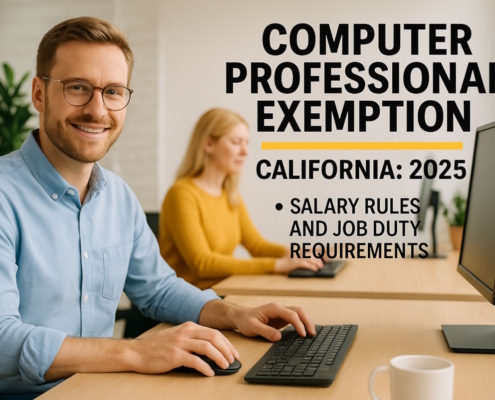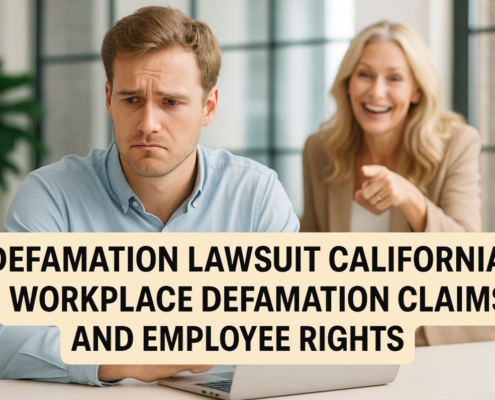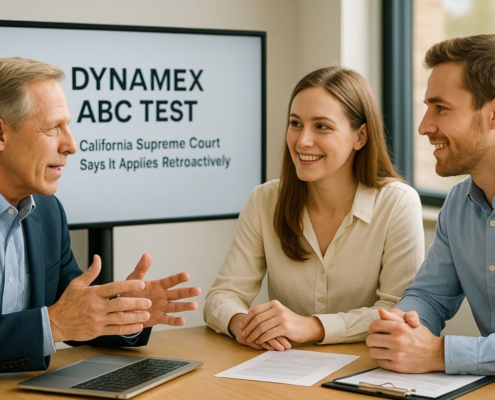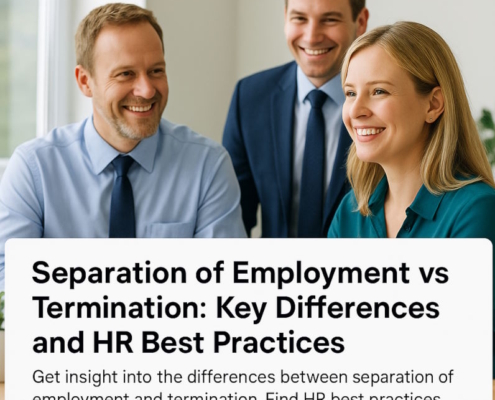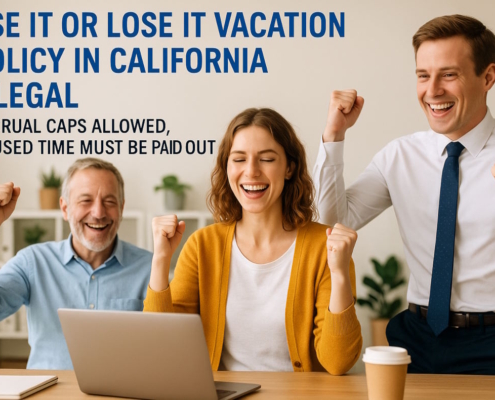Introduction
Our “Top 10 of 2025” will help you navigate the significant changes to employment laws in the Golden State as you make plans for the year. We have emphasized the key changes that our readers need to be aware of, even if we haven’t included all of the new California labor laws that go into effect in 2025.
1. California HR Compliance Checklist 2025: Minimum wage increase
Key change
Regardless of the number of employees, the state’s minimum wage rose to $16.50 an hour for all firms on 1st January 2025. Additionally, California exempt employees are required to receive a minimum yearly wage of $68,640 as of January 1.
To-Do List for Employers
- Verify that all required adjustments have been made by contacting accounting, payroll, and human resources.
- Any employees affected by the higher minimum wage should get revised Wage Theft Prevention Act notifications.
- Post the most recent versions of the Minimum Wage Order as well as the wage order that applies to your place of employment. (The Department of Industrial Relations’ website offers posters for download.)
- Be mindful to look for higher minimum pay mandated by local regulations (for example, the minimum wage in Menlo Park is now $17.10, while in Mountain View, it is presently $19.20) and state legislation (for example, workers in fast food and some healthcare must be given greater minimum wages). Most of the workers outside the rural areas will have access to a higher amount of minimum wage compared to what is stipulated by the new legislation in the state.
2. California HR Compliance Checklist 2025: New Posting Requirements
Key change
Whistleblower Rights Posting: Employers are required under AB 2299 to “prominently exhibit” a specific notice with a detailed list of worker rights and obligations under current whistleblower laws starting on 1st January 2025. The Division of Labor Standards Enforcement’s notice, which can be found on its website, requires that it be placed in 14-point type or bigger; the notice includes printing instructions to comply with this requirement.
Notice for Workers’ Compensation Legal Advice: As of 1st January 2025, employers are required by AB 1870 to inform employees about their rights and privileges under workers’ compensation that (i) they have the right to legal advice from an attorney and (ii) that, in most cases, the attorney’s fees will be deducted from the injured employee’s award.
To-Do List for Employers
- Be sure to post the precise “rights and safeguards” that the Labor Commissioner drafted.
- Take this opportunity to make sure that additional workplace notices are current and in compliance with AB 1870, and update any notices pertaining to workers’ compensation benefits and rights to comply with its requirements.
3. California HR Compliance Checklist 2025: Requiring vacation time before obtaining state PFL benefits is no longer permitted
Key change
Employers are prohibited under AB 2123 from requiring workers to use a maximum of two weeks of accumulated vacation time prior to receiving state-funded PFL insurance coverage as of 1st January 2025.
To-Do List for Employers
- Update the employee handbook and leave and paid time off policy to reflect this modification.
- Inform managers, supervisors, & HR of the mandatory change.
4. California HR Compliance Checklist 2025: Driver’s license is no longer required for the majority of positions
Key change
SB 1100 prohibits companies from discriminating against people without a driver’s license as of 1st January 2025. Employers cannot request a driver’s license in an advert unless they have a definite need that the job requires driving, and the employer has a reasonable doubt that another means of transport would not be as comparable in its journeys or cost. Ride-hailing app, cab, carpool, bike, or walking may all be described as “alternative forms of transportation.”
To-Do List for Employers
- By adhering to the SB 1100 requirement, go through all available job adverts/periodicals, job applications, and other pre-employment forms.
- Make sure to restrict the need for a driver’s license only to jobs where operating a vehicle is a key responsibility. If not, think about the feasibility of using other modes of transportation.
- If a job requires a driver’s license, be transparent in the job offering by outlining the justification for the demand.
5. California HR Compliance Checklist 2025: Increased Protections for Certain Crime Victims (or Their Families)
Key change
- According to AB 2499, employees who have been victims of violence/crime or who have close family members who have been victims of crime would have more rights as of 1st January 2025.
- The new law, among other matters, extends the definition of a victim of crime to encompass a victim of an “event of violence,” which encompasses sexual assault, domestic abuse, stalking, and various other violent actions.
- Broadens the meaning of a “family member” who has been the victim of criminal activity, allowing employees to nominate a “designated person.”
- Allows for the provision of adequate accommodations in the workplace for both victims and their families
- Adds additional approved reasons for taking leave, such as moving and taking part in safety planning
- Enables workers to take advantage of paid sick leave per California’s Healthy Workplace Healthy Families Act in cases where they or someone in their family is a victim.
- Employers may restrict leave for victims to twelve weeks, for workers who have victims in their family to ten days, and for relocation connected to victims to a maximum of five days. If the employee qualifies for leave under the California Family Rights Act or the Family and Medical Leave Act, the employer may mandate that the leave continue concurrently with those leaves. Additionally, companies with at least twenty-five workers are prohibited from retaliating against or taking other negative actions against workers who take time off for approved purposes.
- Furthermore, under the Fair Employment and Housing Act, the new law reframes current protections for crime victims as illegal employment practices, falling under the purview of the California Civil Rights Department’s enforcement powers.
To-Do List for Employers
- To accommodate the extended rights of workers who have been victims of violence/crime or have close family members who have been victims of crime, written regulations & handbooks must be updated.
- Inform HR executives, managers, & supervisors about the change in regulation. This includes offering affected employees more leave options as well as reasonable accommodations, such as time off for moving, safety planning, and other approved uses, and making sure that paid time off for illness can be used in cases where an employee or a member of their family is a victim.
6. California HR Compliance Checklist 2025: At-Work Violence Restraining Regulation is Expanded to Cover Harassment
Key change
SB 428 came into effect on 1st January 2025, and it allows the employers to seek temporary orders of protection on behalf of employees who have been harassed and, within the scope of their employment, received job-related threats or acts of violence, which might allow them to be entitled to a temporary order of protection as per the existing law. According to the law, harassment is a repetitive behavior that seriously alarms, causes discomfort, or harasses the person and is directed at a given person, and it has no reasonable cause.
To-Do List for Employers
- Anti-harassment directives and education ought to be revised to ensure that employees are conscious of what is and is not considered harassment under the law, capable of identifying behaviors that fall within the guidelines, and know how to report any of them, as well as value the importance of adhering to them.
- Inform managers, EROs, and HR that in the event of a harassment complaint, the business may be able to undertake an investigation to determine whether a workplace violence order of protection is an appropriate solution.
7. California HR Compliance Checklist 2025: Minimum Conditions for Agreements with Freelance Workers
Key change
Beginning 1st January 2025, firms must follow new guidelines when employing independent contractors pursuant to SB 988 (Freelance Worker Protection Act):
- Contract in writing: According to Section 2778(b)(2) of the California Labor Code, independent contractors who complete more than $250 in freelancing work for an employing organization in a four-month period must have a signed contract. The anticipated scope of work, the compensation rate, and the mode of payment must all be specified in the contract.
- Pay requirements: Employers are required to pay independent contractors by the date indicated in the agreement, or no later than 30 days following the conclusion of their work if no date is given. Employers cannot demand that independent contractors take less than what is specified in the contract in order to receive money more quickly.
- Damages: The Act provides for both an individual cause of action and an action by the public prosecutor. If freelancers aren’t paid as necessary, they have the right to damages equal to twice the amount initially stated in their agreement, plus costs and legal fees.
To-Do List for Employers
- Check Section 2778 (b) (2) of the Labor Code on the regulations regarding freelance services and check whether SB 988 is applicable to your organization.
- When it applies, train procurement, hiring managers, and HR on the requirements of SB 988.
8. California HR Compliance Checklist 2025: Combinations of Characteristics That Are Protected
Key change
- The state of California is among the earliest to formally acknowledge intersectionality. In order to make it clear that anti-discrimination statutes in the areas of employment, public accommodations, housing, and education also forbid discrimination depending on the intersection, or conjunction, of more than one protected characteristic, SB 1137 changes those laws with effect from 1st January 2025.
- According to the new law, it might be essential to ascertain whether a single protected trait or a mix of traits could have caused the claimed discrimination or harassment where a party asserts several bases for such behavior.
To-Do List for Employers
- HR executives, supervisors, & managers should receive updated anti-discrimination & anti-bias training to make sure they are aware that the FEHA and the Unruh Civil Rights Act forbid discrimination based on the intersectionality (mix) of more than one protected trait in addition to individual protected traits.
- Follow the courts’ decisions with intersectional discrimination claims, and get legal advice when employees bring up these or any other type of discrimination.
9. California HR Compliance Checklist 2025: Prohibition of “Captive Audience” Gatherings/Meetings
Key change
- The tenth state to outlaw “captive audience” gatherings is California. SB 399 forbids businesses from forcing employees to participate in meetings on political or religious issues, including anti-union gatherings, as of January 1, 2025.
- Employers in California who force their employees to attend these sessions risk a fine of $500 per employee. As long as participation is voluntary, employers are free to keep holding these sessions, which are a common tactic to deter union organizing.
To-Do List for Employers
- Every meeting pertaining to politics or religion (even those that oppose unionization) needs to be optional, and let staff members know that they can choose not to attend at any time without facing any consequences.
- Explain SB 399’s requirements to HR, executives, and supervisors, emphasizing that the legislation defines “political concerns” broadly. Pay attention to this trend. The National Labor Relations Board outlawed captive audience meetings on 13th November 2024. A number of other states, including Hawaii, Washington, Illinois, and Vermont, also enacted legislation prohibiting captive audience meetings.
10. California HR Compliance Checklist 2025: Audits of Social Compliance and Child Labor
Key change
Employers who voluntarily submit their company to a “social compliance audit”—whether the audit is carried out entirely or in part to ascertain whether child labor is a part of the business’s activities or practices—must post a link to the report outlining the audit’s findings with respect to child labor on their website as of 1st January 2025, in accordance with AB 3234. Only employers who carry out audits to ascertain whether child labor is a part of their operations or procedures must put up a link to the report of their findings, even though the term “social compliance audit” has been interpreted broadly to encompass an audit of an employer’s wage and hour and health and safety regulations.
To-Do List for Employers
- Companies that believe they might have to post a link to a report in order to comply should first speak with legal counsel to go over a number of factors, such as (i) whether or not the audit was “voluntary” according to the law’s definition, (ii) whether or not the audit is privileged and shouldn’t be disclosed, and (iii) the way the law works with other relevant ESG laws.
- Watch for updates on AB 3234’s regulatory guidance.
Legislative defeats
The following were a few significant legislative setbacks in 2024:
- The ballot issue (Proposition 32) for a minimum wage increase in California, which, according to the ballot, wanted to raise the state’s minimum wage gradually to a level of $18 an hour (by 2026), was voted down by a small margin.
- By amending the tolling regulations and FEHA administrative timeframes, SB 1022 would have given the director of the Civil Rights Department an additional seven years following the date of the claimed infraction to file a class or group complaint. Citing the statute of limitations, which would have been “far longer than the time limit period for similar civil cases, including class action lawsuits on behalf of employees,” California’s governor vetoed the bill.
- SB 1116 did not pass the committee. It would have allowed workers to receive unemployment compensation after 2 weeks of absences brought on by a strike or trade dispute.
